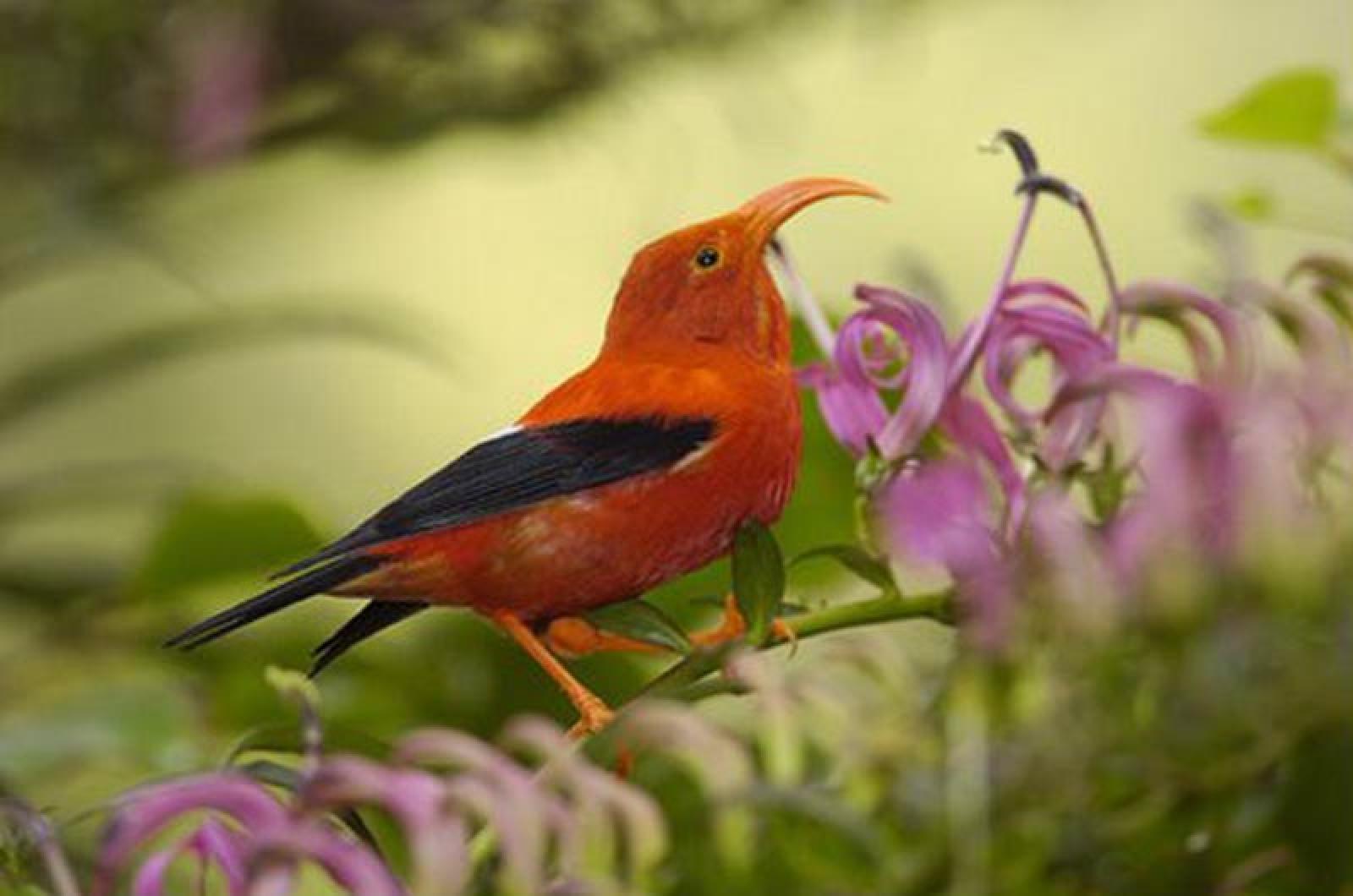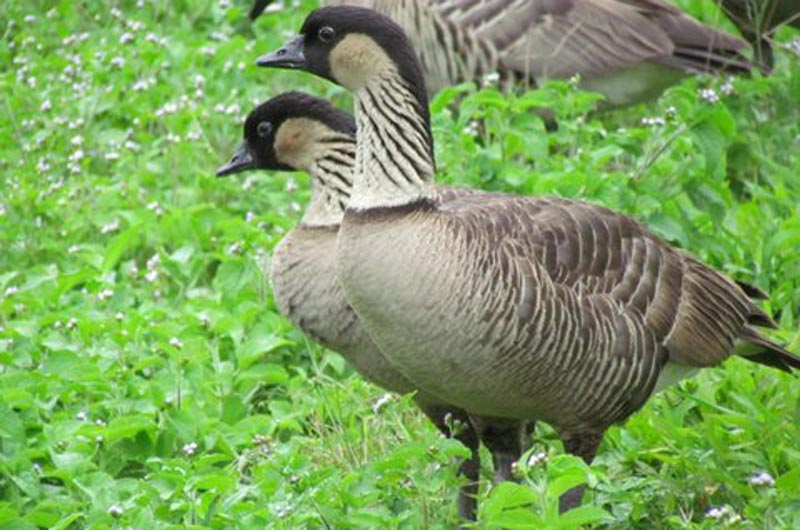Our Hawaiian Islands adventure continued when we moved from Oahu to Kaua’i. We had seen most of the introduced or exotic species and winter migrants of the Hawaiian Islands so we now wanted to concentrate on the endemic species. We were lucky enough to schedule a bird walk with Jim Denny, a well-known island birder and author of A Photographic Guide to the Birds of Hawai’i.
We left Po’ipu beach, which is located on the southern end of Kaua’i, before light and drove along the coast headed west. We turned north on Kokee Road and headed north, climbing high ridges to an elevation of over 3,000 feet. Just before first light we caught a grouse-like bird in our headlights. We stopped and looked at the bird with our binoculars and figured out it was yet another introduced bird, a black francolin hailing originally from southeast Asia. Carefully and slowly wending our way around switchbacks and hairpin turns we arrived at the Koke’e Natural History Museum just before 8 a.m. Jim arrived shortly thereafter and we loaded our gear into his 4x4 truck and proceeded on a rough tract into the Alakai Wilderness Preserve. Jim parked his truck at the trailhead and we started climbing up to around 3,500 feet on a trail that was mostly covered with a boardwalk. The areas not covered were quite muddy and slippery, but with the walking sticks provided by Jim we negotiated the areas without much ado.
We came to a crossroads where four trails met and while we were standing there we spotted an I’iwi, one of the Hawaiian endemic honeycreepers which are no longer found on Oahu due to the lack of proper habitat. Jim showed us the flowers that the I’iwi feeds on, which are shaped with exactly the same curve as the bird’s bill. The I’iwi scarlet red and black feathers were prized by the early Hawaiians as they were used to make ceremonial capes for royalty. Jim mentioned that it is estimated that 30,000 I’iwi feathers were used to make one cape!
We went part way down the parts of the two trails and were able to find four other endemics — Kaua’i Elepaio, Kaua’i Amakihi, Anianiau and Apapane. The honeycreeper that we saw more than any other was the Apapane. Not only does this red and black bird have great songs, but both Flip and Jim were able to hear the whirring of its wings. The Apapane, unlike other honeycreepers, feeds on a variety of flowers.
The Kaua’i Elepaio was the easiest to find. Its wren-like behavior as it hunts for insects finds it close to the ground and not fearful of humans. To photograph the Elepaio, however, was almost impossible as it moved like greased lightning. The Kaua’I Amakihi, a yellowish honeycreeper with a heavy black bill, was fairly easy to spot but with Jim’s help would have been tough to separate from the Anianiau. The Anianiau is the smallest of the endemic honeycreepers, but without seeing others nearby, it was hard to judge size. Luckily Jim showed us that the Anianiau had a small yellow bill versus a heavy black bill and both birds are yellow-green.
On our way down to the museum we spotted the endemic Nene or Hawaiian goose, the state bird of Hawai’i. What a great day. As we drove back to Po’ipu we stopped at the Pu’u o Kila lookout where we watched four white-tailed tropic birds sailing down the canyons.
Bird Sightings:
Gus Ben David had a red-shouldered hawk — a new yard bird — at his farm on or about Jan. 13. Gus had a good view of this unusual Vineyard visitor as it circled over his farm causing his geese to look upward. A great blue heron flew over around the same time. The brown-headed cowbird which had been at Gus’s feeder since before the Christmas Bird Count has disappeared. Gus also added that he has had unprecedented numbers — more than 80 — of mourning doves at his feeder and also picking up gravel along the edges of his road.
Snowy owls are still hanging around the Island as the weather does not bother them. Patricia Bacon found and photographed a snowy owl on Jan. 24 and Sheila Muldaur, Whit Griswold and Laura Wainright went in search of a snowy owl and, thanks to Laura’s spotting ability, found one on the beach at West Basin in Lobsterville on Jan. 26.
Jeff Bernier photographed horned grebes that he found in Menemsha Basin on Jan. 26. He also found a red-necked grebe in the basin as well. Unfortunately Vasha Brunelle found a dead horned grebe behind the Shell gas station in Tisbury on Jan. 25.
Ken Magnuson and Lanny McDowell teamed up and went birding on Jan. 26. They stopped at Sweetened Water Farm and in Janet Norton’s duck pond found and photographed a leucistic mallard duck. Ken also sent a photo of eastern bluebirds drinking water in snow melt along Skiff avenue in Tisbury. Don’t forget in freezing weather to provide water for our feathered friends.
Lanny McDowell sent photos he took on Jan. 26 and 27 of a male red-breasted merganser from Lake Tashmoo, ruddy turnstones from the Katama boat ramp, as well as purple sandpipers and brant from the Oak Bluff jetties.
Please report your bird sightings to birds@mvgazette.com.
Susan B. Whiting is the co-author of Vineyard Birds and Vineyard Birds II. Her website is vineyardbirds2.com.





Comments (1)
Comments
Comment policy »